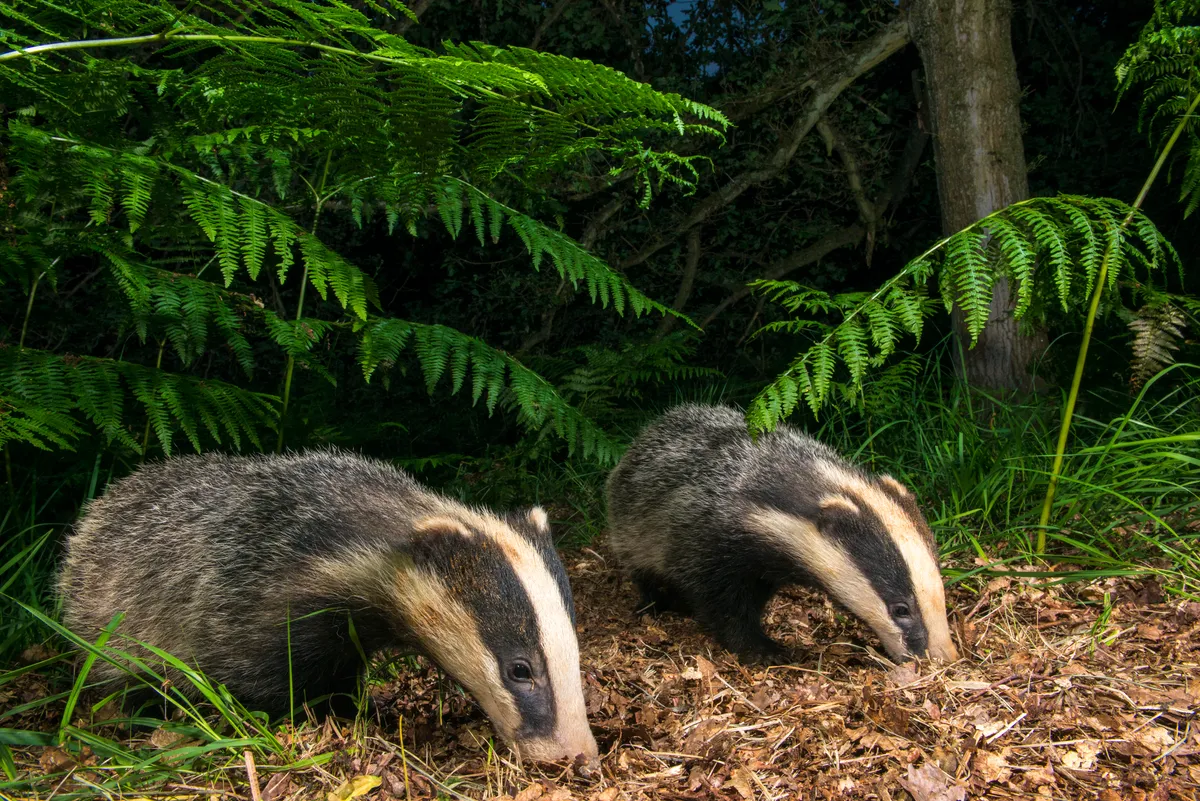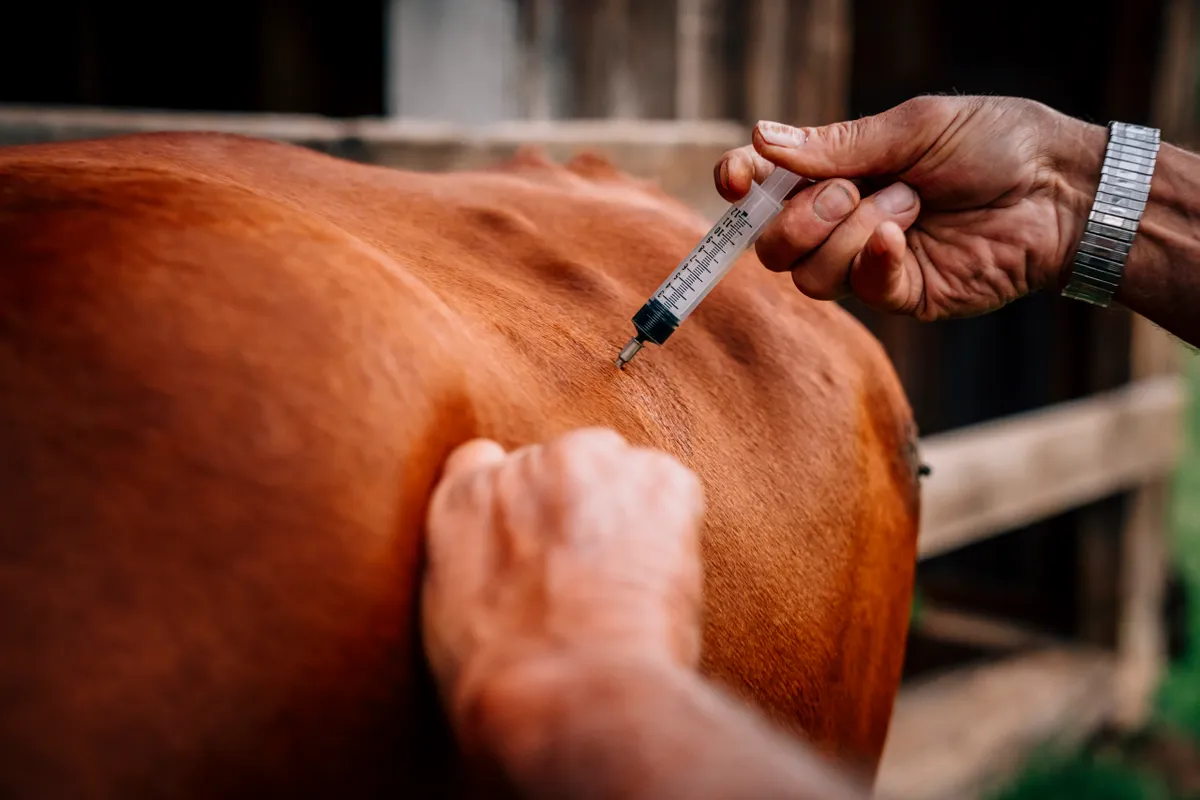By autumn 2022, it will be nine years since the then government initiated the first two badger culls in Gloucestershire and Somerset.
Since then, culling has expanded to cover nearly 37,000km2 of the south-west and west of England, and (not including figures from 2021) taken the lives of some 143,000 badgers at a cost to the public purse of £47 million.
If it carries on as planned, some campaigners opposed to culling have estimated that 280,000 badgers will be killed, perhaps three-quarters of the entire UK population.
The badger cull at a glance
- Badgers are protected, yet have been killed in England since 2013 using licenses issued by Natural England. Culls are carried out in designated zones, outside of the breeding season.
- The aim of culling is to reduce a population by 70 per cent over four years, with supplementary culling taking place for the following five years.
- The first two culling zones were in Gloucester and Somerset, and then Dorset. From 2016, culling was rolled out more widely – by 2020 there were 54 cull zones.
- Badgers are culled by two methods: they are caught in cage traps and shot at close range, or are shot with a rifle in the countryside at night.
- A 2013 government report stated that it was likely that up to 22.8 per cent of badgers shot were still alive after five minutes, and therefore at risk of pain and suffering.
- In 2021, under licenses given by Natural England, 1,575 badgers were vaccinated across England.
When and why did the badger cull begin?
The history of badger culling England dates back to 1971, when a dead badger was found riddled with bTB. The Randomised Badger Control Trial (RBCT) of the late 1990s and early 2000s – a huge field experiment covering 30,000km2 – was a major turning point.
Analysing the data thrown up by the trial, the Independent Scientific Group (ISG), found that culling was associated with marginal declines in bTB levels in cattle, though not enough for the scientists to recommend the government adopt culling as a policy.

“After careful consideration of all the RBCT and other data, including an economic assessment, we conclude that badger culling cannot meaningfully contribute to the future control of cattle TB in Britain,” the ISG said in its report, published back in 2007.
But the very fact that a modest benefit had been detected meant that the incoming government of 2010 could be persuaded to adopt culling as a part of its strategy to tackle the problem of bTB.
Has the badger cull reduced bTB in cattle?
And the result of this wholescale, licensed killing of a protected species? According to a new study, there has been no significant decrease in levels of bovine tuberculosis (bTB) in cattle that can be attributed to culling, the sole reason for embarking on this drastic course of action in the first place.
You might expect that new, peer-reviewed science, even in an area as controversial as badger culling, might help to draw the two sides of the debate together. While all three of the study’s authors are high-profile opponents of the policy, it is also important to point out that the peer-review process involved four experts in epidemiology – the science of diseases and how they spread – evaluating and approving the paper.
But, if anything, the pros and antis are even more polarised. The Department for Environment, Food & Rural Affairs (Defra) said the authors had worked to “a clear campaign agenda”, “manipulated data” and that was it “disappointing to see [the research] published in a scientific journal.”

The biggest farming union, the NFU – which has consistently taken a pro-cull stance – reiterated figures from a previous, considerably smaller study that showed badger culling had reduced bTB rates in herds of cattle.
Published in Vet Record, the official, peer- reviewed journal of the British Veterinary Association, this latest study is the most comprehensive one that’s been carried out since 2013. It looked at 30 cull areas and has taken into account more than 200,000 herd tests (which involve testing several dozen animals per herd) over a six-year period.
So, what did it find? That the prevalence of bTB both within and outside culling areas had marginally declined at almost exactly the same rate between 2013 and 2019. In 2013, bTB was officially prevalent in 14 per cent of herds in culling areas and just over 12 per cent of herds outside them. By 2019, these figures were 11 per cent and less than 10 per cent respectively. In other words, there is no scientific basis for shooting badgers.
Paul Torgerson, chair of veterinary epidemiology at the University of Zurich, says this is the first time that data from across all the areas where culling has been carried out has been collated in this way.
“When you analyse the data and compare the incidences of herd breakdowns [with bTB] where there is no badger culling to areas where there is, there’s no statistical significant difference in the rate,” he says. “If badger culling was going to do what they said it would, you would expect a greater decrease in the numbers of herd breakdowns [in cull areas].”
In fact, what’s happened is that the government introduced other measures, alongside culling, to tackle bTB, such as stricter controls on how cattle can be moved around the country and better biosecurity measures, which Torgerson suspects have resulted in the fall.
Why are there different conclusions on the badger cull?
However, the question of how the RBCT and this new study arrived at slightly different conclusions about the impact of culling badgers on levels of bTB remains.
The answer, according to Torgerson, and one of the paper’s authors, ecological consultant Tom Langton, is that when recording cows in cull areas, they were discounting “unconfirmed breakdowns”.

This is where a cow has given a positive skin test suggesting the presence of bTB, but that in a subsequent post-mortem, no lesions (associated with tuberculosis) were found. If unconfirmed breakdowns had been accepted by the ISG as indicating a cow had bTB, then the results would not have shown culling as having a positive impact, both Torgerson and Langton argue.
“The ISG seemed to exclude unconfirmed breakdowns on the flip of a coin,” says Langton. “Perhaps because they didn’t want to present £50 million [the public money spent on the RBCT] as finding no effect and therefore to be wrongly judged as a failure.”
Defra has been quick to respond to the new research. A rebuttal letter appeared in the same issue of Vet Record, and an email response sent to BBC Wildlife said its own data showed huge reductions in rates of bTB in cattle in areas where culling had taken place, compared with limited or no success in areas where no culling had occurred.
Another of the study’s authors, Iain McGill, a vet who has campaigned against badger culling, says the figures given to BBC Wildlife showing the positive impact of culling were based on data that was not in the public domain and therefore hadn’t been peer-reviewed. “We’ve asked them for this data, and haven’t received it yet,” he says.
McGill adds that he is disappointed by Defra’s response and that he had been hoping the department would want to
find out how they had arrived at their conclusions. “But their immediate response is to rubbish it, which is a pity,” he says.
Two papers published by the Animal and Plant Health Agency – an executive agency under the control of Defra – have shown the positive impacts of badger culling on bTB levels in cattle. The second of these papers took data from Gloucestershire and Somerset, subjected to culling over a four- year period, and Dorset, over two years. It has been extensively cited as evidence that culling works, with rates down by 66 per cent in Gloucestershire and 37 per cent in Somerset, and with no change in Dorset.

McGill, however, points out that this research was very limited in its scope. “It only goes up to 2017,” he says. “The following year [2018], in Gloucestershire, there was an increase in bTB levels of 130 per cent. If they’d included that data, they’d have got very different results. Our paper has looked at the most data, over the biggest area and over the longest time period.” Because of that, it is most likely to have identified “what the trends are and whether they are statistically significant or not.
James Wood, head of the department of veterinary medicine at the University of Cambridge, is a member of Defra’s bTB Partnership group and previously received funding from Defra to carry out his research. He says the new study is compromised by the fact that the authors did not know the exact location of the culling, because this information has not been made public by Defra in order to protect anonymity.
“What they have had to do is to combine areas within counties where there has been culling and no culling and say they’ve been heavily culled,” he says. This will have had the effect of masking any positive impact of culling. He also argues they have not considered the way in which it can take two years to see the effects of culling.
What else can be done to reduce bTB in cattle?
One thing that scientists on both sides of the divide do agree on is that two of the most important steps to reducing bTB do not involve badgers or culling – rather, developing a more sensitive test for identifying cattle that have bTB, and establishing a method by which cattle can be vaccinated against the disease and also distinguished from infected animals.

If we are to vaccinate cattle, Wood explains, we need a surveillance system that satisfies our trading partners that our products are not from bTB-infected animals. “Cattle and beef exports are worth billions of pounds a year,” he says. “It’s a major thing to address if you are trying to maintain cattle farming as an economic activity.”
Until then, culling is set to continue. But the question of whether it is having any impact, and exactly what that impact is, remains a bone of contention that appears to be as far as ever from being resolved.
Main image: A European badger in a field in Yorkshire, England, UK. © Getty
